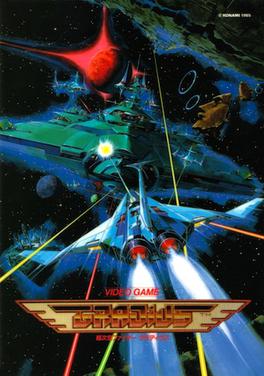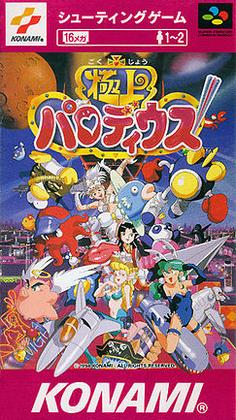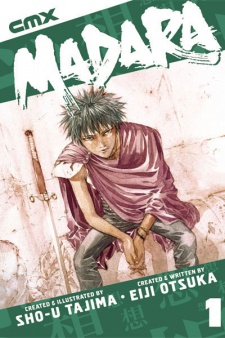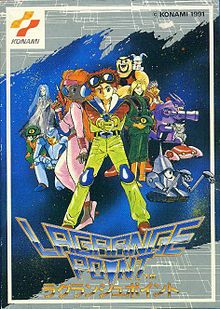
Gradius is a side-scrolling shooter video game developed and published by Konami. The first game in the Gradius series, it was originally released as a coin-operated arcade game in 1985. The player maneuvers a spacecraft known as the Vic Viper that must defend itself from the various alien enemies. The game uses a power-up system called the "power meter", based upon collecting capsules to purchase additional weapons.

The Family Computer Disk System, commonly shortened to the Famicom Disk System, or just Disk System, is a peripheral for Nintendo's Family Computer home video game console, released in Japan on February 21, 1986. It uses proprietary floppy disks called "Disk Cards" for cheaper data storage and it adds a new high-fidelity sound channel for supporting Disk System games.

Radar Scope is a 1980 shoot 'em up arcade game developed by Nintendo R&D2 and published by Nintendo. The player assumes the role of the Sonic Spaceport starship and must wipe out formations of an enemy race known as the Gamma Raiders before they destroy the player's space station. Gameplay is similar to Space Invaders and Galaxian, but viewed from a three-dimensional third-person perspective.

Hudson Soft Co., Ltd. was a Japanese video game company that released numerous games for video game consoles, home computers and mobile phones, mainly from the 1980s to the 2000s. It was headquartered in the Midtown Tower in Tokyo, with an additional office in the Hudson Building in Sapporo. Hudson Soft's mascot is a bee named Hachisuke.
Intelligent Systems Co., Ltd. is a Japanese video game developer best known for developing games published by Nintendo with the Fire Emblem, Paper Mario, WarioWare, and Wars video game series. Originally, the company was headquartered at the Nintendo Kyoto Research Center in Higashiyama-ku, Kyoto, but later moved to a building near Nintendo's main headquarters in October 2013. They were also responsible for the creation of various development hardware both first and 3rd party developers would use to make games for Nintendo systems, such as the IS Nitro Emulator, the official development kit for the Nintendo DS.

The Satellaview is a satellite modem peripheral produced by Nintendo for the Super Famicom in 1995. Containing 1 megabyte of ROM space and an additional 512 kB of RAM, Satellaview allowed players to download games, magazines, and other media through satellite broadcasts provided by Japanese company St.GIGA. Its heavy third-party support included Squaresoft, Taito, Konami, Capcom, and Seta. To use Satellaview, players purchased a special broadcast satellite (BS) tuner directly from St.GIGA or rented one for a six-month fee. It attaches to the expansion port on the bottom of the Super Famicom.
TwinBee (ツインビー) is a video game series composed primarily of cartoon-themed vertical-scrolling shoot-'em-up games produced by Konami that were released primarily in Japan. The series originated as a coin-operated video game simply titled TwinBee in 1985, which was followed by several home versions and sequels. The character designs of almost every game in the series since Detana!! TwinBee in 1991 were provided by Japanese animator Shuzilow HA, who also planned and supervised most of the subsequent installments in the TwinBee series. The series also inspired a radio drama adaptation that lasted three seasons in Japan, as well as an anime adaptation.

Castlevania II: Simon's Quest is a 1987 action role-playing game developed and published by Konami. It was originally released in Japan in 1987 for the Famicom Disk System, and in North America in 1988 for the Nintendo Entertainment System. It is the second Castlevania game released for the NES, following the original Castlevania (1986). Set seven years after the events of the first installment, the player once again assumes the role of vampire hunter Simon Belmont, who is on a journey to undo a curse placed on him by Dracula at the end of their previous encounter. Dracula's body was split into five parts, which Simon must find and bring to the ruins of Castle Dracula in order to defeat him. The game deviates from the traditional platforming of its predecessor, incorporating role-playing and open world elements.
1987 saw many sequels and prequels in video games, such as Castlevania II: Simon's Quest, Dragon Quest II, Final Lap, and Zelda II, along with new titles such as After Burner, Contra, Double Dragon, Final Fantasy, Mega Man, Metal Gear, Operation Wolf, Phantasy Star, Shinobi, Street Fighter and The Last Ninja. The Legend of Zelda was also introduced outside of Japan.

Multi-memory controllers or memory management controllers (MMC) are different kinds of special chips designed by various video game developers for use in Nintendo Entertainment System (NES) cartridges. These chips extend the capabilities of the original console and make it possible to create NES games with features the original console cannot offer alone. The basic NES hardware supports only 40KB of ROM total, up to 32KB PRG and 8KB CHR, thus only a single tile and sprite table are possible. This limit was rapidly reached within the Famicom's first two years on the market and game developers began requesting a way to expand the console's capabilities.

Yie Ar Kung-Fu is an arcade fighting game developed and published by Konami. It first had a limited Japanese release in October 1984, before having a wide release nationwide in January 1985 and then internationally in March. Along with Karate Champ (1984), which influenced Yie-Ar Kung Fu, it is one of the games that established the basis for modern fighting games.

Konami's Ping Pong is a sports arcade game created in 1985 by Konami. It is the first video game to accurately reflect the gameplay of table tennis, as opposed to earlier simplifications like Pong. It was ported to the Amstrad CPC, Commodore 64, Famicom Disk System, MSX, and ZX Spectrum.

The Goonies is a 1986 platform video game developed and published by Konami for the Family Computer. It is based on the film of the same name. Konami also developed a completely different version for the MSX in Japan. First released on cartridge, it was later re-released in Disk System format in 1988.

Gokujō Parodius ~Kako no Eikō o Motomete~, translated as Gokujo Parodius – Pursuing the Past Glory and also known as Fantastic Journey, is a 1994 side-scrolling shooter arcade game developed and published by Konami. It is the third entry in their Parodius series, itself a parody spin-off of their Gradius series.

Konami Wai Wai World, "wai wai" being a Japanese onomatopoeia expressing a noisy or boisterous atmosphere, is a 1988 Family Computer platform video game released only in Japan by Konami. The game itself stars various Konami-created characters as well as Mikey and King Kong, who appeared in two Konami-produced, film-based games.

Wai Wai World 2: SOS!! Parsley Jō is a 1991 Famicom platform game released only in Japan by Konami. It is a sequel to Konami Wai Wai World, and stars various Konami characters. It was also re-released for the Wii U Virtual Console on September 2, 2015 in Japan.

MADARA is a Japanese manga series written by Eiji Ōtsuka and illustrated by Shōu Tajima. Originally published from 1987 to 1994, it is set in a mythological era in Japan and tells the story of Madara, a goodhearted teenage boy who uses fantastic prosthetic limbs called "gimmicks" and a legendary sword to fight his own father, the evil overlord Miroku. The franchise has also spawned video games and a two-part OVA.

Castlevania, known in Japan as Akumajō Dracula, is a 1986 action-platform game developed and published by Konami. It was originally released in Japan for the Famicom Disk System in September 1986, before being ported to cartridge format and released in North America for the Nintendo Entertainment System (NES) in 1987 and in Europe in 1988. It was also re-issued for the Family Computer in cartridge format in 1993. It is the first installment in the Castlevania series.

Akumajō Special: Boku Dracula-kun is a platform video game released by Konami in Japan for the Famicom on October 19, 1990. It is considered a parody of the Castlevania series. A version for mobile phones was released on 30 June 2006 in Japan.
















